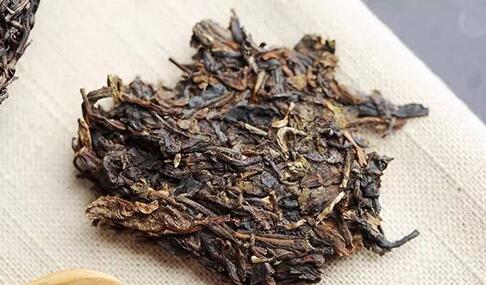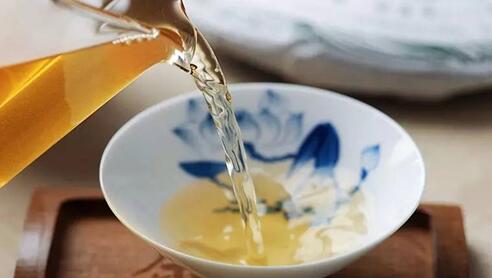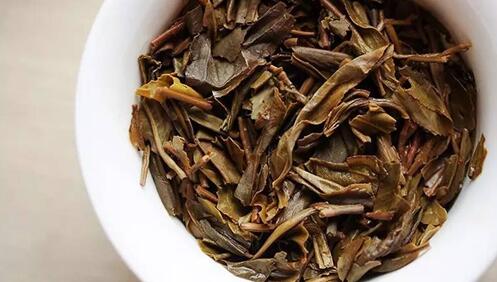When it comes to Pu'er tea, the first impression is often a round "cake." The birth of tea cakes was originally for convenient transportation and storage. Today, considering Pu'er tea's aging characteristics, cake tea remains the most classic and aesthetically pleasing form.
Pu'er is divided into raw tea and ripe tea. Raw tea is made from fresh leaves after processes like fixation, rolling, and drying, resulting in loose raw tea. If further compressed into shapes like cakes or bricks, it becomes compressed raw tea, which hasn't undergone pile fermentation. Raw Pu'er tea has a strong, stimulating nature, with a pronounced bitterness when newly made or shortly stored. Its liquor is light or yellow-green, making it less suitable for immediate consumption.

Ripe Pu'er, on the other hand, undergoes pile fermentation during production, completing the fermentation process directly. Thus, ripe tea has less room for further transformation compared to raw Pu'er. Long-term storage of ripe tea primarily aims to reduce the "fire" and dryness from pile fermentation, eliminate off-flavors, and achieve a smoother taste. Importantly, ripe Pu'er's production process wasn't standardized until the 1980s. Before that, apart from naturally aged raw Pu'er, there was no strict definition of ripe Pu'er. If someone claims to have decades-old ripe Pu'er, take it with a grain of salt.
Tea enthusiasts familiar with Pu'er basics may not know how to fully appreciate it. Here, we outline seven steps to understand Pu'er tea.
Step 1: Observe the Tea
Well-made Pu'er should have stable craftsmanship: uniform and端正 shape, rounded edges,整齐 borders without missing corners, consistent thickness, moderate tightness, visible patterns, glossy surface, and clear tea strands. Standard Pu'er cakes measure 19.5 cm in diameter and typically weigh 357 grams. Ripe tea cakes should appear black-brown, brown, or reddish-brown; raw tea cakes transition from dark green (young) to brown (aged).

Step 2: Feel the Tea
Assess the compactness: loosely pressed tea ages faster, while tightly pressed tea ages slower. Check the interior—some cakes have higher-grade tea sprinkled on the surface for better appearance, while others use uniform-grade tea throughout.

Step 3: Smell the Dry Leaves
Inhale deeply to detect aromas. Pu'er tea improves with age, but improper storage (e.g., mixing with杂物) can lead to off-flavors like dampness, grass, smoke, mold, or spices. Poor processing can also introduce unwanted smells. In short,异味茶 is not enjoyable!
Step 4: Brew and Smell the Aroma
Use 6-8 grams of tea, rinse with 1-2 infusions, then smell the cup底香. Some cups lack fragrance, others offer subtle or intense aromas. For example, Jingmai古树茶 has a lasting,飘逸 aroma, while Bingdao古树茶 is delicate and faint. Off-flavors like grassiness (under-frying) or生青味 (insufficient heat) indicate processing flaws.

Step 5: Observe the Liquor
Ripe tea liquor ranges from bright red→red→thick red→brown→dark brown. Raw tea evolves with age: yellow-green→golden→orange-yellow→orange-red→石榴红→宝石红→酒红 (like fine wine). Clarity progresses from浑浊→translucent→crystal clear. Texture varies from watery→oily→thick.
Step 6: Taste the Aroma
Off-flavors like烟味 (smoke),糊味 (burnt), or红茶味 (improper drying) indicate issues. Aromas evolve from清香 (fresh)→floral→fruity→honey→pine resin→陈香 (aged)→camphor (rare)→herbal (rare). Complexity ranges from单一→layered→changing.

Step 7: Savor the Flavor
Bitterness and astringency are baseline flavors—good Pu'er resolves them quickly. Taste profiles include sour (faulty processing)→bitter/astringent→sweet (regional traits). Mouthfeel progresses from thin→thick→full-bodied. Texture评价: rough→smooth→silky. Aftertaste varies: dry→sweet→lingering.
